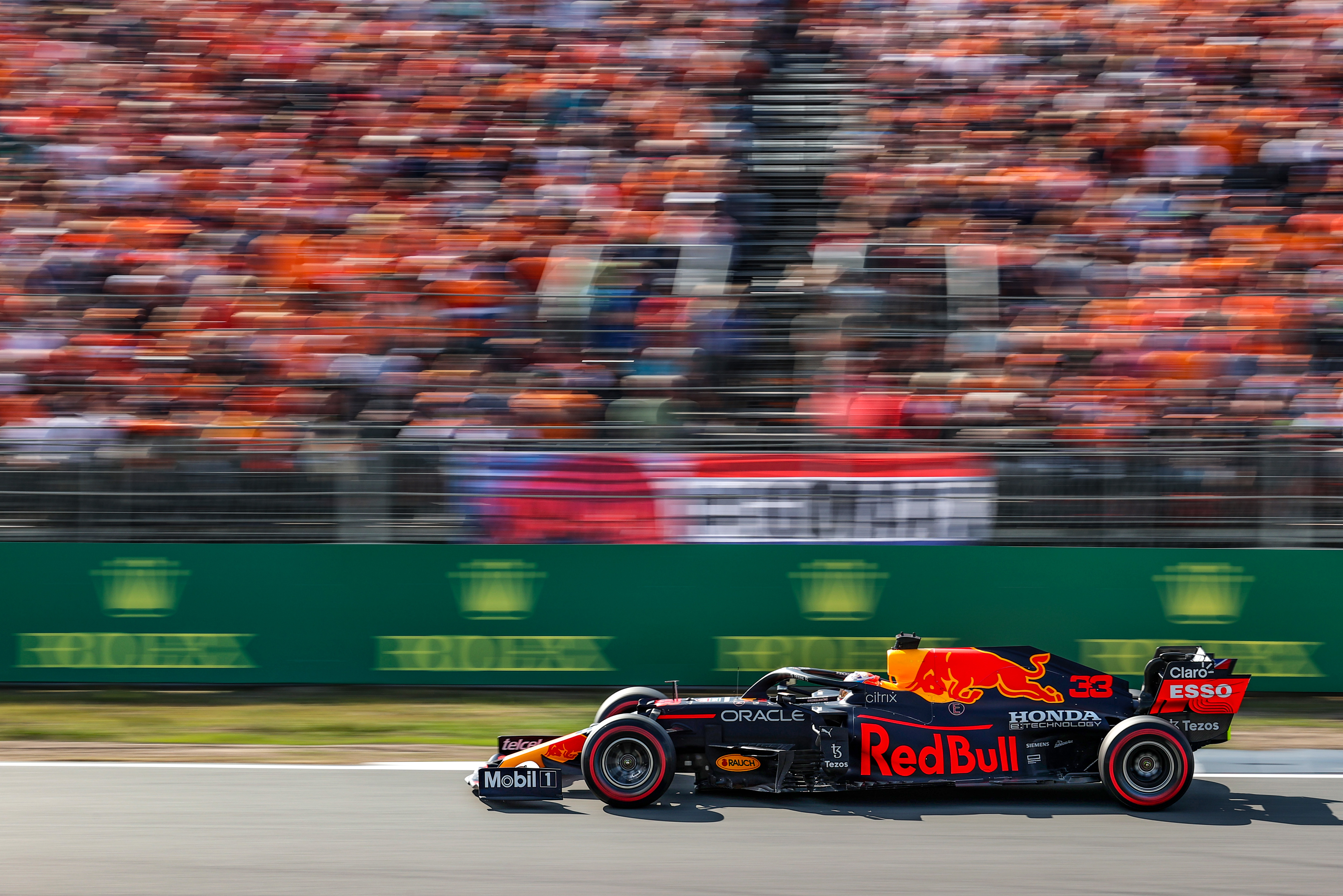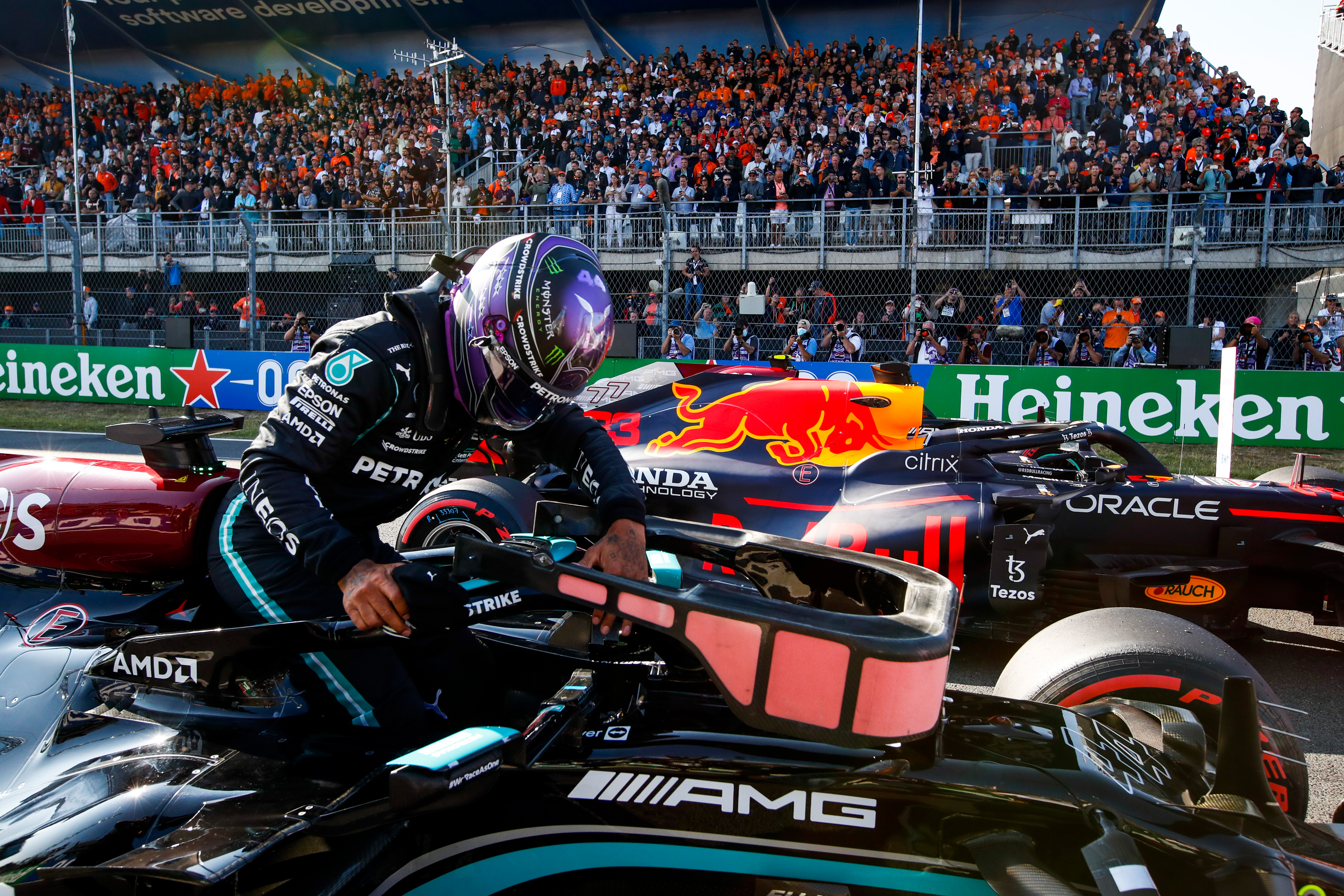Up Next

Just 0.038s separated the crowd’s pole-sitting hero Max Verstappen from Lewis Hamilton at the end of Formula 1’s Dutch Grand Prix qualifying– which was way closer than looked likely even as late as FP3 this morning.
Coincidentally, that 0.038s was exactly how much time Verstappen found from his first Q3 lap to his final one. So even if he’d not improved he’d still have been on pole, courtesy of having set the time first. But it was very nearly a dead heat, that’s how close it was.
The general undercurrent of the weekend has been the Red Bull falling more readily into its grove than the Mercedes, which has taken a bit of tweaking.
That’s perhaps been a bigger Mercedes disadvantage than it otherwise would be, given a weekend of so many red flags during the practices and on a new track with so much more than usual to find out. Into that mix, Hamilton lost most of Friday afternoon practice to his power unit problem.
So Mercedes has generally been a half-step behind in its preparation and it only really came together in time for qualifying. “We’ve had to work away at improving the balance,” confirmed Hamilton, “just slowly chip away at it. We are really on the edge in the first sector, where Max is really fast. Even now I think if there’d been another session we’d have still been able to have gone quicker.”

The bogey section of track for the Mercedes seemed to be between the exit of Turn 2 and the entry to the banked Turn 3 where the team reckoned it was losing 0.18s to Verstappen. The Mercedes definitely didn’t have the same ability to get across the track after exiting Turn 2 to optimise the entry for Turn 3. Verstappen was able to be much more positive and aggressive with his car here than the Merc drivers.
As it happened, Verstappen had a problem through this sector on his final run – and that potentially opened the way for Hamilton to steal the position. On the first runs, Verstappen was an impressive 0.231s faster than Hamilton through there, very much in line with FP3, in which Verstappen lapped over 0.5s clear of the Merc pair. But on the final Q3 flyer things didn’t go quite so well for Max there.
“The exit of 3 is really bumpy and I got some wheelspin there, so I had to do a double upshift,” he said. “Also because you are a higher gear [earlier] you use more electrical energy so I had a de-rate as well. Up until the wheelspin I’d been nearly 0.2s up [on the first run]. Instead, I was a tenth and a half down by the time I got to turn 7 [at the end of the sector].”
With Hamilton improving by a half-a-tenth in this sector, it brought the deficit down to just 0.172s in the Merc’s worst sector. The pattern seemed to be that it would be around 0.1s adrift of the Red Bull through the middle sector and a tenth quicker through the final one.
Verstappen was still favourite but he needed to deliver in the remainder of the lap. He improved in the middle sector by 0.087s, ensuring he was quicker than Hamilton through there by almost a tenth.
Verstappen appeared to have no DRS on his final run to the line and was marginally slower through the final sector than on his previous lap. Would this be enough to elevate Hamilton, last on the road and with the Merc’s best sector coming up?

Though the lower drag Merc was indeed 0.2s quicker, it fell short of the combined sector 1 and 2 deficit by that 0.038s. It was fair to say that the close margin flattered the Mercedes, representing just a cleaner lap in a slightly slower car. Had Verstappen not had the inopportune moment he could probably have been on pole by a couple of tenths.
There was quite a difference in how their respective laps were delivered, as a look at the speeds across the various timing beams shows. As usual, the Red Bull appears to be carrying greater downforce, the Mercedes lower drag.
That big chunk of time the Red Bull gains through the transition between Turns 2 and 3 looks very much just like raw downforce, the Mercedes running out of rear grip at a place where the Red Bull is allowing Max to manhandle the car to the perfect part of the track for the high entry into Turn 3.
The Red Bull is entering the long main straight faster but the Merc is immediately catching up there, courtesy of the lower drag. By the time they reach the start/finish line Verstappen’s advantage over Hamilton is just 0.4km/h. By the time they reach the speed trap much further down the straight, the Mercedes is travelling 6.5km/h faster and the Red Bull is a solid last in the speed rankings there.
What are the implications of this for the race?
Rather like at Silverstone, it implies that Verstappen really needs to hang onto that lead on the first lap, exploit the Red Bull’s greater pace through the first two sectors to pull enough of a gap that Hamilton isn’t close enough to use his superior straight-line to pass on the Tarzan approach. If Verstappen can get past that moment of crisis, his task becomes a little more straightforward.

But by no means easy. “The tyres are struggling through the high-speed sections,” says Max, “and there are a lot of laps. So that’s going to be a factor, I think.”
If Hamilton cannot pass the Red Bull in the first couple of laps, then it could become a game of strategy based around tyre usage in the pit stop window. In this, Mercedes should have the ace of Valtteri Bottas to play, in a two-against-one potential strategy pincer (especially as Sergio Perez went out in Q1 and starts a lowly 16th) – but only if they can stay close enough to the flying Dutchman.
It’s beautifully poised amid the sea of orange.







